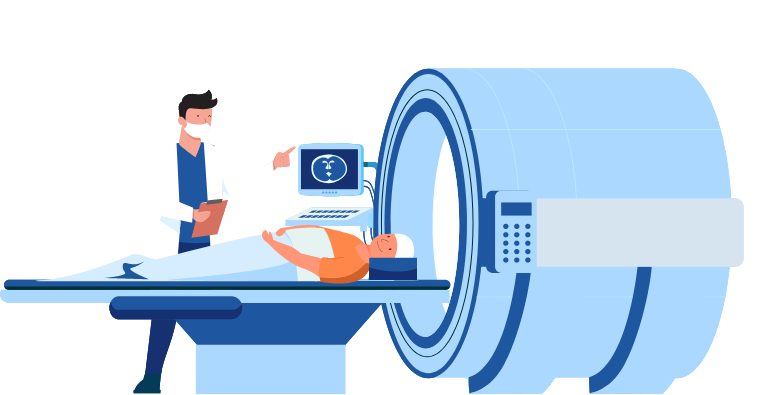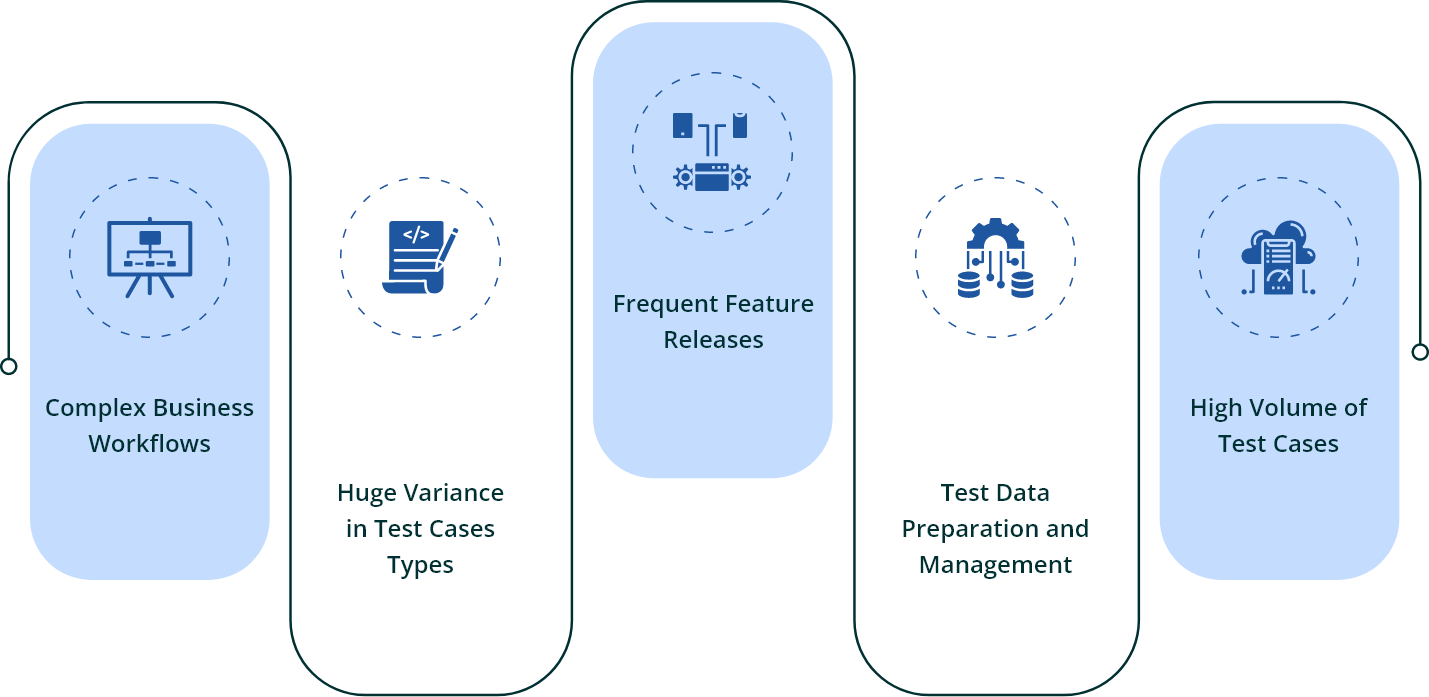Backdrop

A New York based healthcare organization that Henry works at, researches, develops, and offers services for Electronic Medical Records (EMRs) in the oncology department. As an organization they aim to improve the quality-of-care provider to cancer patients, aided by their proactive research in oncology.
To ensure Henry and his team make every cancer patient’s life easier, they offer their technologies and services for the web and mobile. The organization offers a suite of services for oncology practitioners, complete with Billing Business Flows, Research Recommendations based on Clinical Conditions, and Prior Authorization & Claim submission. The practitioners can also choose to pick individual products from the suite.
The Conflict

Henry’s team was involved in enhancing features of the web application. Owing to the constant increase in their customer base and demands, there was a need for a higher frequency of feature enhancements and continuous improvement. However, it had become quite tedious to enhance features/release new features. It so happened that Henry’s team was lacking QA capabilities, and could not carry out regression tests on time.
The application Henry’s team was involved with heavily relied on data from EHRs. As it is, EHR platforms are complex in nature. They are riddled with various dimensions, such as specific business process flow, compliance, security, identity and access management and so on. Each and every module has its own business rules and expected outcomes.
Here is a list of hurdles that have been hindering Henry’s team from frequent feature releases

Finding a Healthcare Quality Assurance Expert
Henry could not sit on the sidelines and watch his team struggle with quality assurance. To help his fellow team members and make their lives simpler, he started looking for healthcare quality assurance service providers. He was then alerted by his colleagues regarding Nalashaa Healthcare Solutions. Henry was made aware that the team at Nalashaa had helped automate a test suite for the mobile application.
Soon, Henry and his team have an elaborate discussion with Nalashaa to share their pain-points. Nalashaa readily started digging and found the root cause as to why the problem exists.
The initial discussions with Henry’s team led Nalashaa’s QA team to assess all the dimensions of EHR’s operations. This was done to map the existing state of the EHR to the required state that Henry’s team was aiming for. Once the operational enhancements necessary for the future EHR was identified, the team at Nalashaa was all geared up to implement it.
Solving the QA Dilemma
The QA team at Nalashaa, at the behest of Henry’s team, developed and implemented an integrated framework based on Selenium. This framework was equipped to handle UI tests, API tests, and Interface tests. Nalashaa coded the test cases in such a way that it would serve the purpose of maximum code re-usability, bringing down test case duplication/redundancy.
HL7 Parsing and Un-parsing
The team developed utilities to handle parsing and un-parsing of HL7 messages. These HL7 messages were then validated against expected outcome, and against each message type. As HL7 messages had different formats for each function, such as admission, discharge or transfer.
Priority Setting for Regression
Test scripts were grouped based on their complexity, components, and priority dimensions to establish priority for regression tests. The team also took a call and defined that in case the complexity, components, and priority dimensions put the feature in the low priority bucket, even if they fail the regression test – they could be released.
Continuous Releases
Manual intervention to deploy releases was taken out by incorporating the automation suit with a CI/CD pipeline. This way, as soon as releases pass the regression tests, they would be deployed. This way Henry’s team did not have to be on the edge when a regression test was successful to manually release it.
Alerts and Notifications
Nalashaa implemented notification and alerts, for Henrys team, on the testing status and outcomes. They also implemented automated defect logging where high priority failures were automatically assigned to respective parties for quicker turn around.
Success Quotient with Healthcare QA
Now that Henry and his team had Nalashaa’s help with the test strategy, test automation, and thereby improving test coverage, Henry’s team enjoyed the below benefits.
Henry’s team no longer struggled manually testing their releases. They were happy, productive, and more efficient with Nalashaa’s QA Automation solution.
The Tools that Helped Healthcare QA Automation
Henry’s team thanked Nalashaa’s QA team for being so helpful. Below are the technologies and tools that they made use of.
- Selenium 3.0
- Visual Studio IDE
- C# with NUnit
- Team City


Top-notch Healthcare Quality Assurance is Just a Step Away
Drop us your e-mail and we’ll get back to you.
